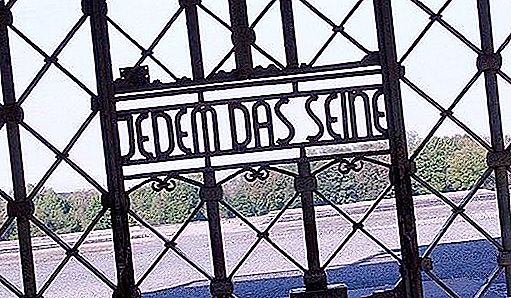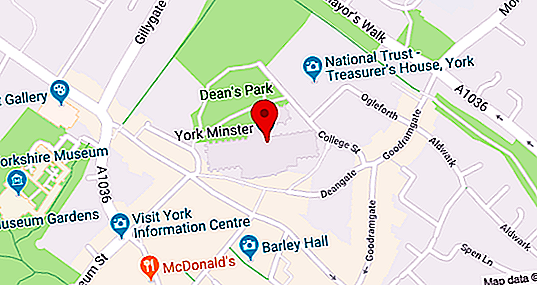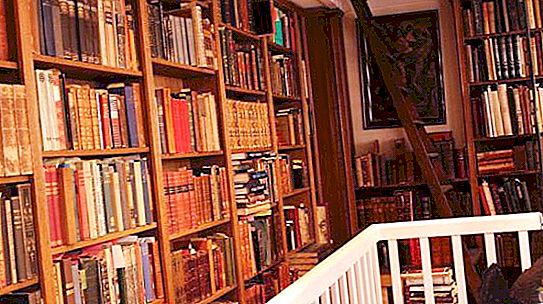The Borodino Battle Panorama Museum in Moscow (photos are presented in the article) is located on Kutuzovsky Prospekt, near the Park Pobedy metro station. Here is a large number of exhibits related to the Patriotic War of 1812. The panorama "Battle of Borodino" in Moscow, its history and features will be described in detail in an essay.
History
Before you start exploring the panorama of the Battle of Borodino (Moscow), you need to turn to history. The exposition itself was created by the famous artist Francois Roubaud between 1911 and 1912. This was the third battle canvas of the master. The first picture with battle scenes, "The Assault of Aul Akhulko", Roubaud finished in 1890. He received for her the honorary title of academician of the Academy of Fine Arts of Bavaria, as well as the Order of St. Michael and the Legion of Honor (France).
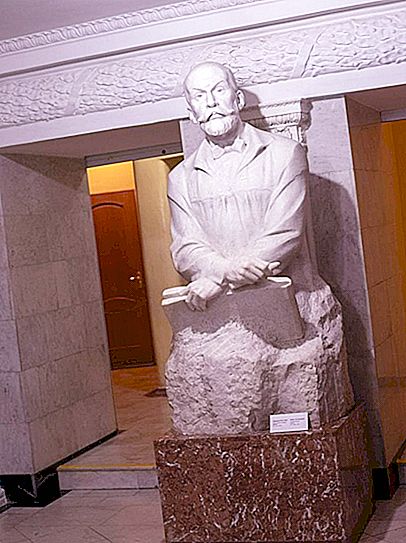
After completing work on the painting "Defense of Sevastopol" in 1905, the master thought about a new work. In 1909, Roubaud decided to create the panorama of the Battle of Borodino. In Moscow, for the 100th anniversary of this event, they began to prepare in advance. His idea received support, and an order was received from the imperial court to create this large-scale canvas.
Creating a picture
Francois Roubaud painted a panoramic picture of the Battle of Borodino, while in Munich. In creating this large-scale creation, he was assisted by a military historian, Lieutenant General B.I. Kolyubakin, master of painting I.G. Myasoedov, as well as artists P. Muller, M. Tseno-Dimer, K. Forsh and the brother of the painter Roubaud himself.
As a result, a canvas was written, measuring 15 by 115 meters. It depicted a decisive battle and one of its most important moments. In May 1912, the canvas was completed.
For several days, the picture was presented at the Munich charity exhibition. Then she was sent to Moscow using special railway platforms. The artist followed his work of art, accompanied by three workers and four assistants.
The first exposition in Russia
For the panorama of the Battle of Borodino, a special wooden pavilion was built in Moscow. The authors of the project were military engineer P. Vorontsov-Venyaminov and engineer E. Izrailovich. The pavilion was erected on Chistye Prudy, on the spot where house No. 12 is currently located.
The construction took place in a hurry, since the place for the pavilion itself was allocated only at the very beginning of 1912, and the exhibition had to be opened in August - on the 100th anniversary of the battle. The construction itself was planned as temporary, for only one season, since capital construction with wooden buildings in this urban part was banned due to fire safety. In the future, the structure was planned to be rebuilt using stone as a material.
It took almost a month to install a huge picture and place a subject plan. Already in August 1912, posters appeared on the streets of Moscow announcing the opening of the Battle of Borodino Panorama Museum in 1812 in Moscow.
The opening ceremony took place on August 29, 1912. It was attended by Emperor Nicholas II, the entire seed of the Romanovs, as well as representatives of the nobility. Already on August 31, the pavilion was available for public viewing.
Further events
After the opening of the fate of the panorama "Battle of Borodino" in Moscow was not the best way. The roof of the temporary pavilion began to leak during the rain. Because of this, the canvas umbrella, which was located above the site and the subject plan, got wet. Dirty stains from the water began to appear in the picture.
In 1914, the museum temporarily ceased operations for diplomatic reasons. The fact is that during the First World War, France was Russia's closest ally.
After the October Revolution, the building, together with Roubaud’s canvas, as well as with the subject plan and the rest of the property, was given over to the electrotechnical school.
The premises themselves were used by the literary and art circle for various public events. In 1918, the Battle of Borodino panorama museum was closed, and by the middle of the year the building had fallen into disrepair and was demolished.
Picture state
The very large-scale canvas by Francois Roubaud, 115 meters long, was wrapped on a special wooden shaft and for several years was stored in various rooms that were not adapted for this.
Due to unsatisfactory storage, a significant part of the picture is almost rotted. Out of 1725 m 2, about 900 m 2 were lost. The commission, led by I. Grabar in 1939, examined the canvas and issued a verdict on the impossibility of its restoration.
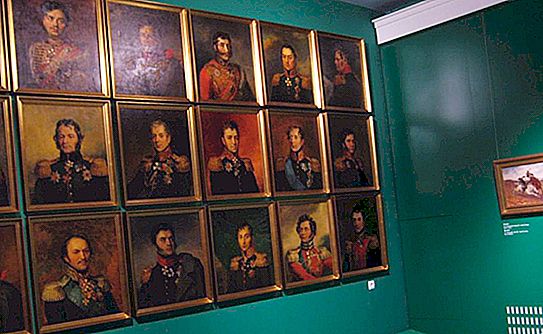
After World War II, it was decided to re-examine the canvas. For this, the canvas was delivered and placed in an aircraft hangar. He managed to deploy only one third of the entire length.
At that time, the state of the painting was very deplorable, and some members of the commission suggested leaving only the preserved sections of the canvas. Poorly preserved places, it was proposed to write again. However, the monumental artist P.D. Korin, who headed the commission, made an attempt to preserve the work of Francois Roubaud.
Painting restoration
Work began on the restoration of a large-scale canvas. It took the group a year and a half for all the work. It should be noted that the head of the group of restorers P. D. Korin decided to make a number of changes to the large-scale picture of Roubaud. The figure of M.I. Kutuzov, depicted on the canvas, was enlarged. P. Bagration, who was not initially present, was also depicted on the canvas.
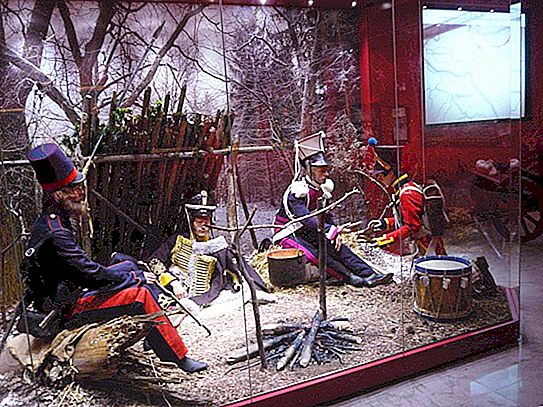
After the restoration work was completed, it turned out that in Moscow there was no building in which a large-scale picture of Roubaud could be placed. In this regard, the panorama "Battle of Borodino" was sent for storage in the storerooms of the Pushkin Museum im. A.S. Pushkin.
New building
There was a question about the placement of the picture, in connection with which it was decided to build a new building. Several architectural projects were created in which buildings with columns, arcades and pediments, in other words, with classical elements, were proposed. The building itself was planned to be erected on the river bank, near Neskuchny Garden.
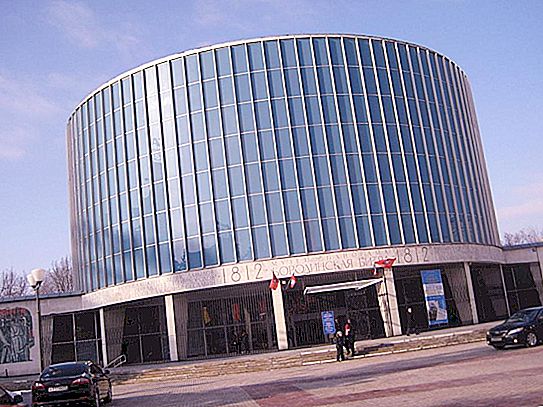
However, the construction was moved to Kutuzovsky Prospekt, to the place where the village of Fili was previously located. This was also done because it was here from September 1812 that a military council took place in the simple hut of the peasant M. Frolov, where M. I. Kutuzov announced his decision to leave the capital without a fight.
The new building was erected in the period from 1961 to 1962. The architectural project was created by S. Kachanov, A. Korabelnikov, Yu. Avrutin. This unusual project was far from classical buildings intended for museums and exhibitions.
Building description
The basis of the new building for the Battle of Borodino panorama in Moscow was an object with a cylindrical shape, 23 m long, which was lined with special glass. The wings of the building were crowned by two wings made of reinforced concrete and with facades, which were decorated with mosaic panels, made according to the sketches of the artist B. Talberg. They depicted "The victory of the Russian troops and the expulsion of Napoleon" and "People’s militia and fire in Moscow." The names of the heroes of the war of 1812 were carved on the side walls of the building.

After completion of construction work, the painting by F. Roubaud underwent another restoration. It was performed by a group of artists led by M. Ivanov-Churonov. The opening of the panorama museum took place on October 18, 1962 and was timed to coincide with the 150th anniversary of the Battle of Borodino.
Damage and restoration
In 1967, several vandals who were supporters of the Cultural Chinese Revolution poured flammable liquid onto the canvas and set it on fire. As a result, approximately 60% of the whole picture was affected. A new restoration was needed, which was undertaken by the battle painters of the studio of M. Grekov, who was a student of Francois Roubaud.
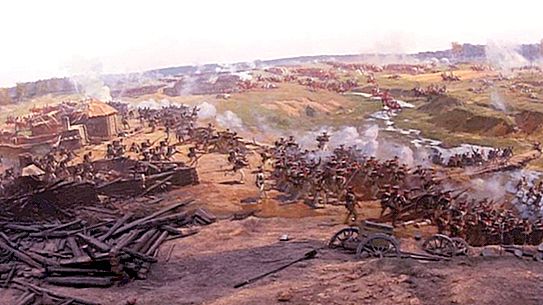
After completion of work, the canvas was placed along with the subject plan in its original place. Despite the fact that the building was designed specifically for one painting, over time, various exhibits were placed here that related to the events of the 1812 war.
After the next restoration in 2012, the painting took its place. In 2017, the overhaul of the building for the Battle of Borodino panorama in Moscow began. The work schedule was scheduled until 2018. After completion of the repair, the museum was opened for visits and is currently operating.
Panorama "Battle of Borodino" in Moscow: work schedule, address
The museum is open from 9-00 to 17-00 from Monday to Thursday, from Friday to Sunday - days off. In addition to the largest canvas, in the museum you can see various exhibitions dedicated to the war of 1812. It was possible to collect about 40 thousand various items of that era.
The address of the Battle of Borodino panorama in Moscow is 38 Kutuzovsky Prospekt, Building 1. The museum is very popular not only with guests of the capital, but also with local residents. Here you can constantly see the line of people who want to get acquainted with a unique large-scale canvas and panorama. Excursions with a guide who tells the history of Moscow during the war of 1812 are also very popular.

